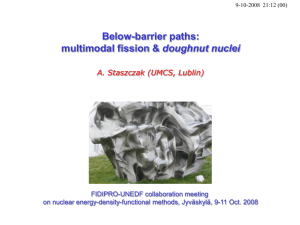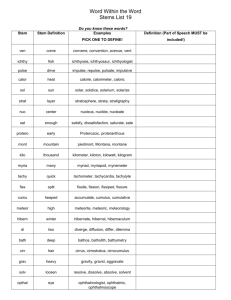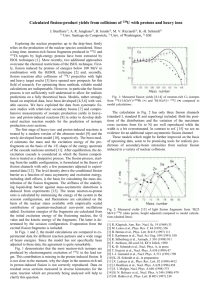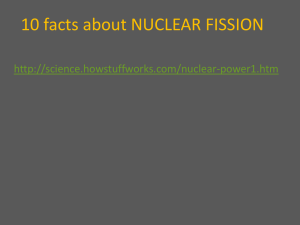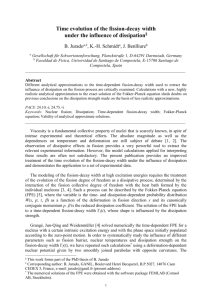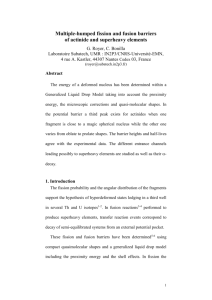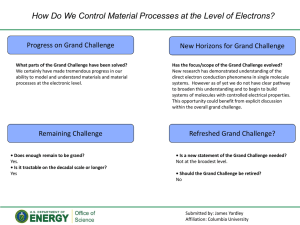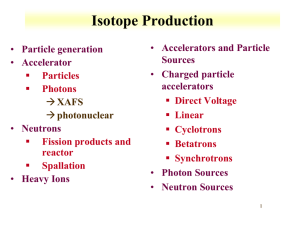Fission of heavy ions and dissipation
advertisement
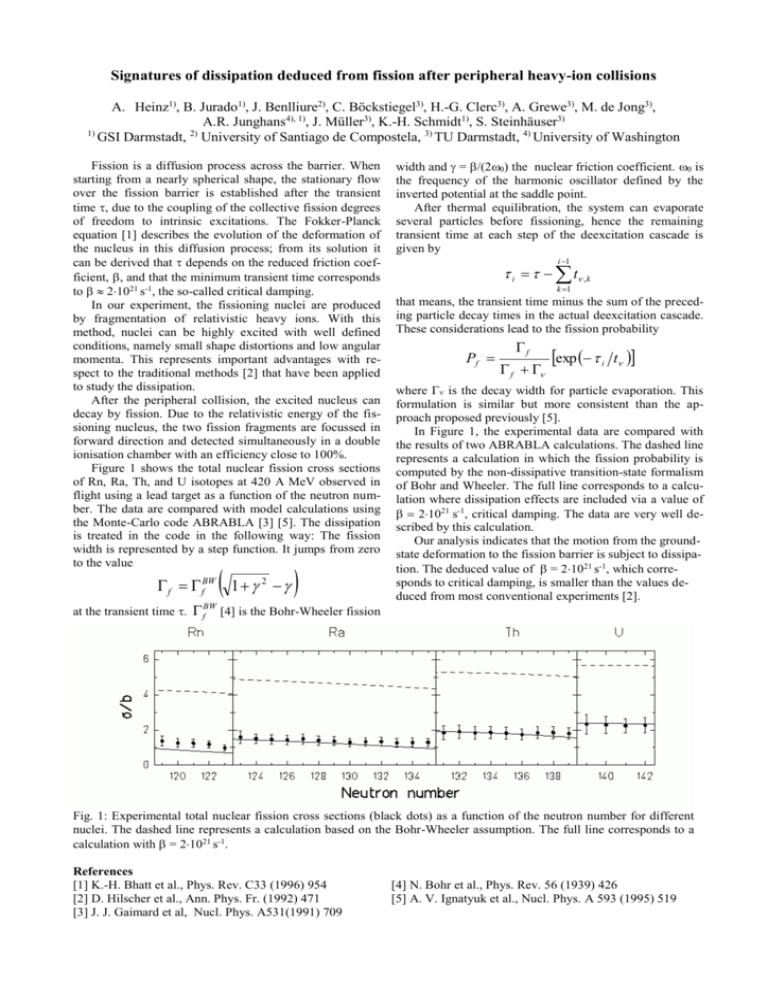
Signatures of dissipation deduced from fission after peripheral heavy-ion collisions A. Heinz1), B. Jurado1), J. Benlliure2), C. Böckstiegel3), H.-G. Clerc3), A. Grewe3), M. de Jong3), A.R. Junghans4), 1), J. Müller3), K.-H. Schmidt1), S. Steinhäuser3) 1) 2) GSI Darmstadt, University of Santiago de Compostela, 3) TU Darmstadt, 4) University of Washington Fission is a diffusion process across the barrier. When starting from a nearly spherical shape, the stationary flow over the fission barrier is established after the transient time , due to the coupling of the collective fission degrees of freedom to intrinsic excitations. The Fokker-Planck equation [1] describes the evolution of the deformation of the nucleus in this diffusion process; from its solution it can be derived that depends on the reduced friction coefficient, , and that the minimum transient time corresponds to 21021 s-1, the so-called critical damping. In our experiment, the fissioning nuclei are produced by fragmentation of relativistic heavy ions. With this method, nuclei can be highly excited with well defined conditions, namely small shape distortions and low angular momenta. This represents important advantages with respect to the traditional methods [2] that have been applied to study the dissipation. After the peripheral collision, the excited nucleus can decay by fission. Due to the relativistic energy of the fissioning nucleus, the two fission fragments are focussed in forward direction and detected simultaneously in a double ionisation chamber with an efficiency close to 100%. Figure 1 shows the total nuclear fission cross sections of Rn, Ra, Th, and U isotopes at 420 A MeV observed in flight using a lead target as a function of the neutron number. The data are compared with model calculations using the Monte-Carlo code ABRABLA [3] [5]. The dissipation is treated in the code in the following way: The fission width is represented by a step function. It jumps from zero to the value f fBW 1 2 at the transient time . fBW [4] is the Bohr-Wheeler fission width and = /(20) the nuclear friction coefficient. 0 is the frequency of the harmonic oscillator defined by the inverted potential at the saddle point. After thermal equilibration, the system can evaporate several particles before fissioning, hence the remaining transient time at each step of the deexcitation cascade is given by i 1 i t ,k k 1 that means, the transient time minus the sum of the preceding particle decay times in the actual deexcitation cascade. These considerations lead to the fission probability Pf f f exp i t where is the decay width for particle evaporation. This formulation is similar but more consistent than the approach proposed previously [5]. In Figure 1, the experimental data are compared with the results of two ABRABLA calculations. The dashed line represents a calculation in which the fission probability is computed by the non-dissipative transition-state formalism of Bohr and Wheeler. The full line corresponds to a calculation where dissipation effects are included via a value of 21021 s-1, critical damping. The data are very well described by this calculation. Our analysis indicates that the motion from the groundstate deformation to the fission barrier is subject to dissipation. The deduced value of = 21021 s-1, which corresponds to critical damping, is smaller than the values deduced from most conventional experiments [2]. Fig. 1: Experimental total nuclear fission cross sections (black dots) as a function of the neutron number for different nuclei. The dashed line represents a calculation based on the Bohr-Wheeler assumption. The full line corresponds to a calculation with = 21021 s-1. References [1] K.-H. Bhatt et al., Phys. Rev. C33 (1996) 954 [2] D. Hilscher et al., Ann. Phys. Fr. (1992) 471 [3] J. J. Gaimard et al, Nucl. Phys. A531(1991) 709 [4] N. Bohr et al., Phys. Rev. 56 (1939) 426 [5] A. V. Ignatyuk et al., Nucl. Phys. A 593 (1995) 519
